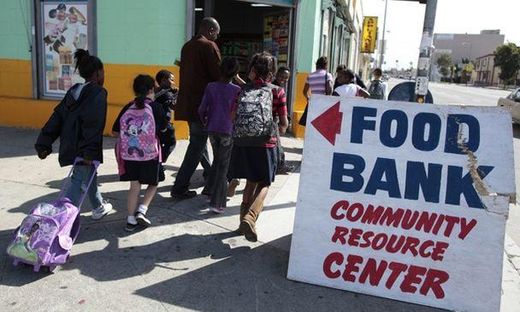
The economy might have 'grown', but who is going to get this bigger piece of the pie?
The economy expanded much faster than first thought in the third quarter, as the government on Thursday revised its estimate of growth in the period to a 3.6 percent annual rate from 2.8 percent.
That was significantly better than the 3.1 percent pace economists had been expecting, and it marked the best quarter for growth since the first quarter of 2012, when output jumped by 3.7 percent. It also marked the first time since then that growth had exceeded 3 percent.
Much of the improvement came from additional stocking up on inventory by businesses as well as a slightly improved trade picture.
Inventory changes are notoriously volatile, so while the healthier signals would be welcomed by economists, inventory gains can essentially pull growth forward into the third quarter, causing fourth-quarter gains to slacken.
Indeed, Wall Street was already estimating that the fourth quarter of 2013 would be much weaker than the third quarter, with growth estimated to run at just below 2 percent, according to Bloomberg News.
The economy expanded much faster than first thought in the third quarter, as the government on Thursday revised its estimate of growth in the period to a 3.6 percent annual rate from 2.8 percent.
That was significantly better than the 3.1 percent pace economists had been expecting, and it marked the best quarter for growth since the first quarter of 2012, when output jumped by 3.7 percent. It also marked the first time since then that growth had exceeded 3 percent.
Much of the improvement came from additional stocking up on inventory by businesses as well as a slightly improved trade picture.
Inventory changes are notoriously volatile, so while the healthier signals would be welcomed by economists, inventory gains can essentially pull growth forward into the third quarter, causing fourth-quarter gains to slacken.
Indeed, Wall Street was already estimating that the fourth quarter of 2013 would be much weaker than the third quarter, with growth estimated to run at just below 2 percent, according to Bloomberg News.
The anemic pace of fourth-quarter growth also stems from the fallout of the government shutdown in October, as well as the continuing fiscal drag from spending cuts and tax hikes imposed by Congress earlier in 2013.
Still, if the better data on growth from the Commerce Department on Thursday is followed by more robust numbers Friday for the nation's November job creation and unemployment, it increases the odds the Federal Reserve will soon ease back on stimulus efforts. The jobs data is scheduled to be released by the Labor Department at 8:30 a.m. Friday.
The labor market data for October was significantly better than expected, despite the government shutdown, and the consensus among economists polled by Bloomberg News is that the economy may have created about 180,000 new jobs in November, while the unemployment rate may have fallen to 7.1 percent from 7.3 percent in October.
Federal Reserve policy makers next meet on Dec. 17 and 18, with an announcement and news conference with the Fed's chairman, Ben S. Bernanke, scheduled for the afternoon of Dec. 18.
Investors are eager for signs of stronger economic growth after years of only tepid gains, but they are also nervous about how quickly the Fed will step back from its aggressive stimulus efforts and let long-term interest rates begin to inch back up.
"You can never be unhappy with a 3.6 percent number for gross domestic product," said Ian Shepherdson, chief economist at Pantheon Macreconomics. "But the details are more sobering than the headlines. Apart from the inventory numbers, the revisions are pretty trivial."
For instance, he said, "Final sales, meaning the demand for goods and services excluding inventories, actually slowed. Either companies thought demand would accelerate and built inventories in anticipation of sales that didn't happen, or they're building anticipation of stronger demand in the fourth quarter."
Mr. Shepherdson added: "It's very likely we'll see much slower inventory gains in the fourth quarter." As a result, if demand doesn't pick up in the final three months of the year, he explained, growth in the fourth quarter will likely be in the range of 1 percent to 2 percent, he Shepherdson estimated.
Reader Comments
to our Newsletter